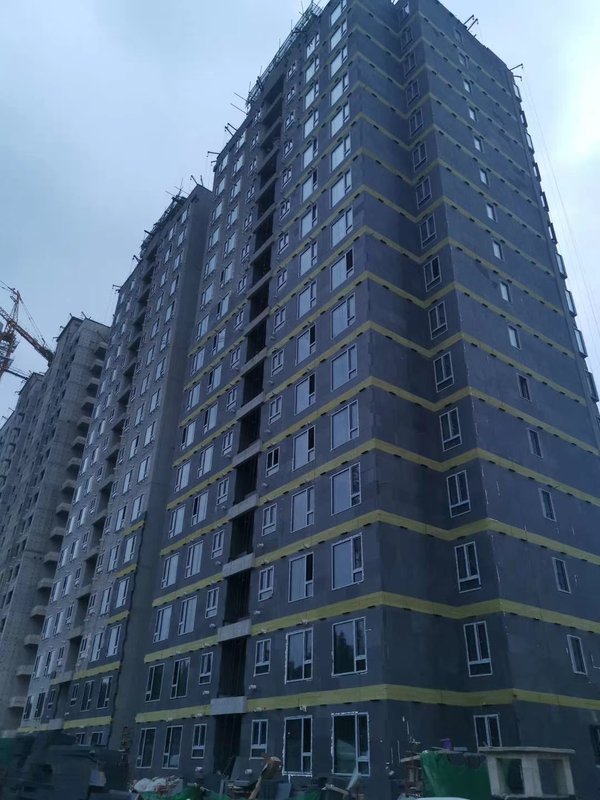Aerogel: The Innovative Force in Low-carbon Architecture, Building a New Line of Defense for Safe and Green Living
With the global pursuit of green buildings, passive ultra-low energy consumption buildings have become the future trend. The limitations of traditional thermal insulation materials in terms of energy conservation and safety are becoming increasingly prominent. Aerogel, with its excellent thermal insulation, fire resistance, and environmental protection characteristics, brings the possibility of innovation to the construction field. This article deeply explores the application advantages of aerogel in passive houses and green buildings. Combining practical cases and cutting-edge research, it demonstrates how aerogel helps buildings achieve high-efficiency energy conservation and safety protection, leading a new paradigm of low-carbon life.
I. The Rise of Passive Houses and the Shortcomings of Conventional Insulation
Passive ultra-low energy buildings represent a pivotal direction for sustainable architecture. However, the majority of thermal insulation systems currently on the market are based on 75% energy-saving standards, making them insufficient for the >90% performance required by true passive buildings.
Organic materials like extruded and expanded polystyrene (XPS/EPS) offer solid thermal insulation but pose major fire risks. On the other hand, inorganic materials such as perlite boards are flame-retardant but lack sufficient insulation performance and add excessive weight. The industry urgently needs materials that offer high thermal resistance, non-combustibility, and eco-friendliness—qualities that aerogel delivers with excellence.
II. Aerogel: A Disruptive Insulation Material for the Low-Carbon Era
Nicknamed “solid smoke,” aerogel brings a revolutionary mix of properties to the construction industry:
Extremely Low Thermal Conductivity
Superior Fire Resistance
Eco-friendly Composition and Lightweight Structure
Recent breakthroughs in domestic manufacturing—particularly atmospheric pressure synthesis—have lowered costs and risks, enabling wider application across green building projects.
Key Aerogel Product Formats:
Aerogel Thermal Insulation Coatings: Proven through outdoor environmental testing, these coatings are especially effective in hot-summer, warm-winter regions, reflecting solar radiation and minimizing indoor heat gain.
Aerogel Composite Non-Combustible Insulation Boards: Featuring A2-grade fire resistance, low bulk density, and ease of installation, these boards are ideal for both new construction and retrofits. They solve common problems like water absorption, delamination, and cracking seen in traditional materials—helping buildings achieve true ultra-low energy performance.

III. Global Case Studies: Proving Economic and Practical Value
1. Zurich, Switzerland: Maximizing Space, Maximizing Profit
In Zurich, an aerogel-insulated façade reduced wall thickness from 20 cm to 14 cm—creating 30 m² of extra usable space. With local housing prices factored in, the added real estate value exceeded material costs, generating a profit of 247,000 Swiss francs.
2. Shanghai Book City: Interior Retrofit with Climate and Carbon Gains
By using a 2 cm aerogel insulation paste paired with reflective coatings, the project achieved excellent thermal performance with just a fraction of the space traditional materials would require. Its carbon emissions were only ½ to ⅓ of rock wool systems—balancing space, performance, and sustainability.
3. Shijiazhuang, China: Integrating Aerogel into Passive Housing
In a landmark project led by Hebei Woqin, aerogel was combined with vacuum insulation panels and rigid polyurethane spacers. This integration significantly improved the envelope’s thermal resistance while meeting fire safety standards. The project has become a benchmark for green building in northern China, showcasing how aerogel can merge energy conservation with real-world safety requirements.
IV. Frontier Research: The Rise of All-Biomass Aerogels
Innovative work by the Sichuan University team has yielded a next-generation, all-biomass aerogel made from gelatin and DNA:
Radiative Cooling: Converts UV light to visible light, enhancing solar reflectivity and reducing outdoor surface temperatures by up to 16°C.
Self-Repairing Surface: Water-mediated interfaces allow for large-scale fabrication and easy maintenance.
Sustainable and Safe: Flame-retardant and biodegradable, the material offers a blueprint for truly circular building materials.
This breakthrough expands aerogel’s potential from thermal insulation into climate-responsive, sustainable building skin design.
Conclusion: Aerogel as the Cornerstone of Future Architecture
From profit-driven projects in Switzerland to carbon-reducing retrofits in Shanghai and landmark passive houses in Hebei, aerogel is steadily moving from laboratory innovation to mainstream architectural application. Its unmatched combination of thermal insulation, fire resistance, and sustainability meets the evolving global demand for green buildings.
While its widespread adoption in exterior walls is still growing, advancements in building standards and quality control systems are paving the way for aerogel to become a staple in construction. Aerogel is not merely an advanced material—it is a guardian of safe, sustainable, and beautiful living environments.
By building stronger, lighter, and greener, aerogel redefines what it means to live responsibly in the 21st century. It forms a new line of defense for both our homes and our planet.
LATEST NEWS
Comprehensive Overview of Polvere di Aerogel Product Lines for Industrial Buyers
2025-12-06
Exploring Aerogel Home Insulation as a Sustainable Choice for Modern Buildings
2025-12-06
Understanding Aerogel Home Insulation for Enhanced Fireproofing and Energy Saving
2025-12-05
Selecting the Right Polvere di Aerogel for Construction and Industrial Needs
2025-12-05
Reducing Energy Costs with Aerogel Home Insulation Technologies
2025-12-04

